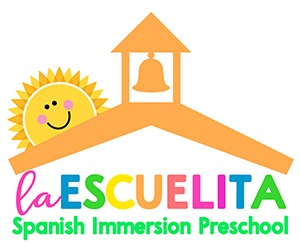Feelings are Important
Children need to develop strategies for managing their emotions, so that they can develop and build their social-emotional skills. When children are more socially and emotionally aware and skilled, they can effectively manage their relationships, and know how to problem solve when challenges arise.
Young children need a lot of adult support to help them recognize and understand their emotions. They need a safe place to express their feelings. The process of calming down when upset and using words to describe feelings and address challenges requires a lot of practice. Children need to be given the right tools to recognize their feelings and to understand and make sense of their world. This requires a lot of adult support. Children who learn how to understand emotions in themselves and others are better able to regulate their own responses to strong emotions. When children experience strong emotions, it’s important for adults to support their efforts to calm down so they will be better able to talk about how they are feeling. After children learn how to calm down and talk about how they are feeling, they can then begin to problem solve. As children’s emotional intelligence grows they are able to problem solve when challenges arise, they are better able to focus on tasks and know how to form friendships and navigate through social situations.
Promoting children’s social and emotional development
Helping children to identify and label emotions is an important first step. Many preschoolers do not yet have the vocabulary to identify feeling words like angry or frustrated, or have the skills to “read” facial cues or to interpret body language.
Here are some simple ways we can support children’s social and emotional development.
Create a safe learning environment where children feel safe talking about their feelings
Help children by naming and labeling their feelings and emotions, then encourage them to talk about them
Give children various opportunities to identify feelings in themselves and others throughout the day
When reading books to young children encourage them to talk about the characters feelings and to discuss their facial features and body language
As an adult openly talk about how you are feeling in an appropriate way
Use real life examples or teachable moments to express emotions
Teach children new strategies to use when feeling emotions that may be expressed inappropriately (e.g., anger, frustration, sadness). Strategies to share with the child might include taking a deep breath when frustrated or angry, seeking an adult to help resolve a conflict, learning to speak up and ask for a turn when a friend won’t share, asking for a hug when sad, and finding a quiet space in the room to calm down when distressed
Using Children’s Literature to Develop Children’s Social and Emotional Competence
Helping children develop emotional understanding requires repeated and intentional practice. One of my favorite ways to support children’s healthy social and emotional development is to read them books that labels and talks about different feelings and emotions throughout the school year.
When doing a read aloud we label the characters feelings, we talk about their facial features. We look at their body language and we try to empathize with the character and their situations by making inferences to their lives. We also talk about strategies the character could use to help him cope with their emotions, such as taking a deep breath, asking for help, describing their feelings, asking for a hug, or walking away.
Social Emotional Activity
El Monstruo de Colores by Anna Llenas is a wonderful story that helps explores feelings with children. What I love about this book is that the author names each emotion, describes it, and it gives an example of how they might feel. She gives emotions color and life, this is extremely helpful for young children who might not have the right vocabulary just yet to name their feelings or emotions. She does not label the feelings as good or bad, they simply are just NORMAL emotions that anyone might have. I love this…normalizing and talking about emotions is important. We all have them, even as adult we are still learning to navigate through them.
Here are some activities that were inspired by this lovely story!
¿De qué color es tu monstruo?-Children illustrate their monster and talk about their feelings.














